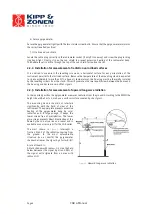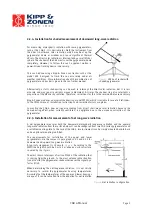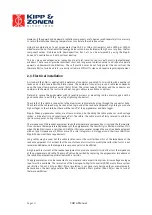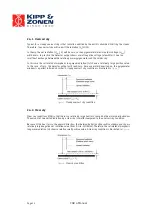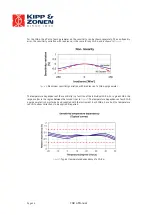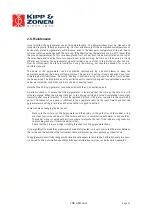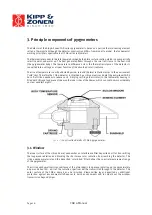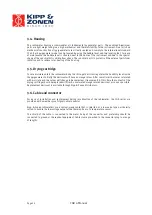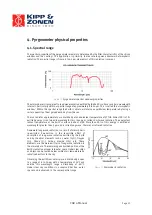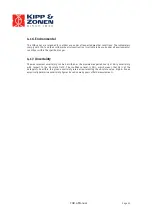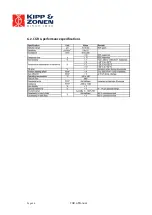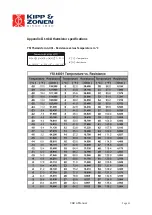
4.10. Operating temperature
The operating temperature range of the radiometer is determined by the physical properties of the
individual parts. Within the specified temperature range Kipp & Zonen radiometers can be operated
safely. Outside this temperature range special precautions should be taken to prevent any physical
damage or performance loss of the radiometer. Please contact your distributor for further information
regarding operation in unusually harsh temperature conditions.
4.11. Field of view
The field of view is defined as the unobstructed open viewing angle of the radiometer. WMO requires
that a high quality pyrgeometer for the measurement of long-wave atmospheric radiation has a field of
view of 180° in all directions (i.e. a hemisphere). CGR 4 achieves this. The inherent field of view of the
instrument should not be confused with the clear field of view of the installation location.
For less critical applications pyrgeometers having a flat silicon window with a typical field of view of
150° are acceptable, such as the CGR 3.
4.12. Directional response
Radiation incident on a flat horizontal surface originating from a point source with a defined zenith
position will have an intensity value proportional to the cosine of the zenith angle of incidence. This is
sometimes called the ‘cosine-law’ or ‘cosine-response’ and is very important in the measurement of
short-wave solar radiation. However, the directional response of pyrgeometers is largely irrelevant
since the hemisphere above does not act like a point source.
4.13. Maximum irradiance
The maximum irradiance is defined as the total irradiance level beyond which physical damage may
occur to the instrument.
4.14. Non-stability
This is the percentage change in sensitivity over a period of one year. This effect is mostly due to
degradation by UV radiation of the black absorber paint on the sensing element surface. Kipp & Zonen
recommends recalibration every two years. However, for quality assurance purposes some institutes,
companies or networks may require more or less frequent recalibration. Please read the chapter on
the calibration procedure for pyrgeometers for more information.
4.15. Spectral selectivity
Spectral selectivity is the variation of the dome transmittance and absorption coefficient of the black
detector paint with wavelength and is commonly specified as % of the mean value.
Page 22
CGR 4 Manual

